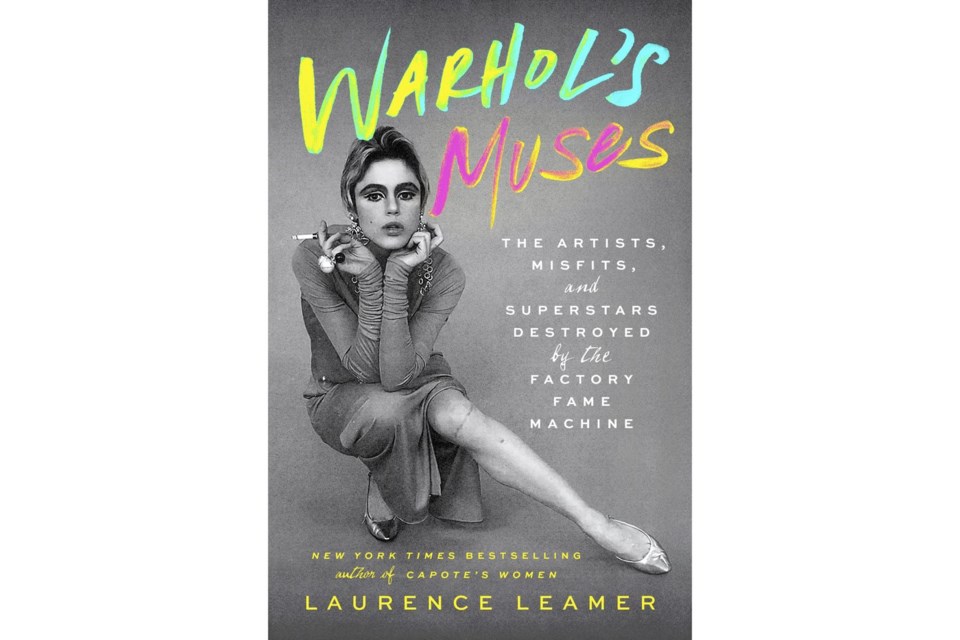There are celebrities whose persona is as famous, if not more so, than their works, or what made them stars in the first place.
Andy Warhol, probably the most important artist to emerge from the 1960s American avant-garde, is one example. His nervous face peering beneath a shock of white hair is as signature as his Campbell soup cans.
It’s clear Warhol wasn’t ashamed to tell the world that he should be reckoned with as a human being, accepted for all that he was, including being gay when that was still relatively taboo.
Laurence Leamer’s well-researched “Warhol’s Muses: The Artists, Misfits and Superstars Destroyed by the Factory Fame Machine” explores the life of Warhol through that perspective. Like Leamer’s earlier books, about Truman Capote and Alfred Hitchcock, his latest explores an artist’s life through their relationships with women.
The opening “Prologue” begins with Warhol’s getting shot by a woman who targets him for basically deranged reasons. And that’s just the beginning.
In one characteristic segment, Warhol shows up at a gala preview in a tuxedo, except his pants are defiantly splattered with paint.
In another, he designs department store windows, one of the first to underline the connection between art and fashion, in an unabashed embrace of 20th century commercialism.
“Warhol is the defining figure of pop art, an artistic movement that burst forth in the early Sixties, taking fine art on a wild roller-coaster ride. In the same way that jazz is the first uniquely American music, so pop art is profoundly American,” a passage in the book reads.
Various recognizable names pop up on the pages, flitting in and out of Warhol’s life: Salvador Dali, the Velvet Underground, Jean-Michel Basquiat.
In 2022, nearly four decades after Warhol’s death, his silk-screen portrait of Marilyn Monroe sold for $195 million.
Every art fan has been mesmerized by Warhol’s psychedelic repetition of flowers, lips and bananas. Warhol seems to inject such everyday items with a greater meaning, or perhaps with zen-like meaninglessness.
To be fair to the legacy of Warhol, it may not really matter in the end what kind of person he was. It may have mattered to those who loved him, the characters Leamer chronicles.
But as Warhol’s art becomes a chapter in history, his reality takes another dimension. He speaks to us, and the world, as Andy Warhol, the artist.
His art is a powerful statement on America, whether you ever knew him as a person or not. The characters in his life, even if they are gorgeous and tragic, are mere footnotes.
In 1966, Warhol told a young reporter that he preferred to stay a mystery.
“I never have time to think about the real Andy Warhol,” he said.
___
AP book reviews: https://apnews.com/hub/book-reviews
Yuri Kageyama, The Associated Press


